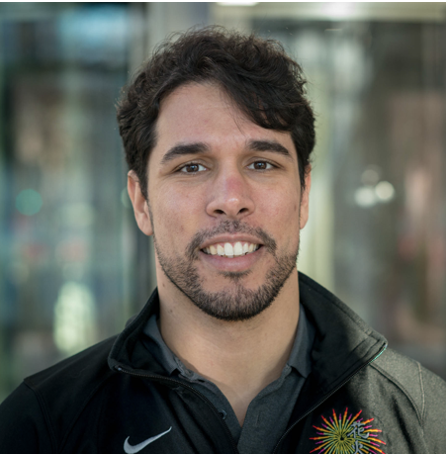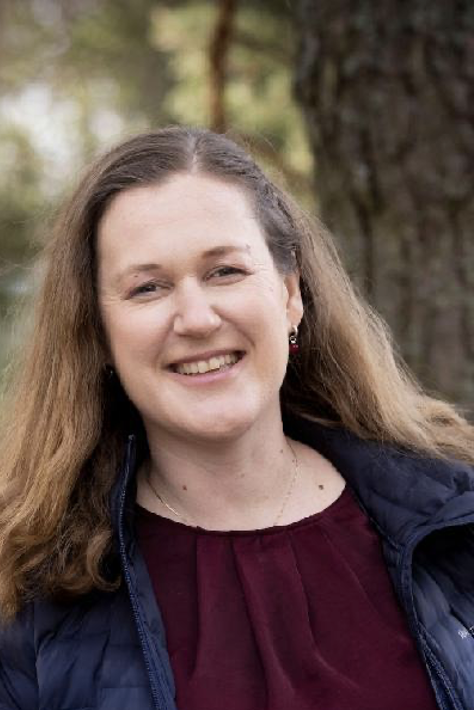Don’t miss AMRI’s Big Data in Microbial Ecology Symposium, November 8-10 at SLU, Uppsala!
The lead organizer for this event is Dr. Maliheh Mehrshad, Microbial ecology, SLU
Below is a list of speakers for this event:
Dr. Artem Babaian, Molecular Genetics, University of Toronto
“Our ‘Laboratory for RNA-Based Lifeforms’ is a research collective focused on understanding the structure and function of genes through the prism or RNA. Interdisciplinary by design, we complement computational and molecular innovation in the pursuit of fundamental ideas.
The sequence biodiversity of Earth’s RNA virome is enormous and unexplored, at most 0.1% of RNA viruses have been described. We create the computational means for ultra-efficient virus discovery by combining modern informatics and massive (petabyte-scale) data analyses. Together, we are building the digital infrastructure to enable the global surveillance of pathogens of pandemic potential.
Through illuminating the depths of the “Dark Virome”, we are expanding the known diversity of RNA viruses and virus-like elements, including those thought to be modern remnants of Earth’s most primordial lifeforms. Specifically, we study RNA enzymes, or ribozymes, and structural RNA elements of unknown function. Analogous to the “DNA genetic code” for protein-coding genes, we are learning to read the structural “RNA genetic code” which first evolved in the early RNA World.
The ribosome, itself a catalytic RNA molecule decorated with protein, is central to life as we have come to understand it. Yet the natural and pathogenic (cancer) population genetic variation of ribosomal RNA is poorly understood. We are cataloguing the genetic and epigenetic heterogeneity of ribosomal RNA and delineating its impact on physionormal and diseased translation.”
“We are interested in studying ecological and evolutionary factors that determine the structure, function and diversity of microbial communities. Our current focus is on the ocean ecosystem and the gastrointestinal tract of animals and humans. We develop and combine bioinformatic and experimental approaches to integrate quantitative ‘meta-omics’ readouts with contextual information, with the goal to better understand and predict the role of environmental microorganisms and the underlying mechanisms of host-microbial homeostasis.
Shinichi Sunagawa is a professor in the Department of Biology at ETH Zürich since 2016. He was born in Germany, where he studied Biochemistry (Diploma 2002) and Marine Ecology (MSc 2005). In 2010, he graduated with a PhD in Systems Biology at the University of California, Merced, USA, before he joined the Computational Biology group of Peer Bork at the European Molecular Biology Laboratory in Heidelberg, Germany. At the EMBL he initially worked as a postdoc (2010-2011), and then as Research- and Staff Scientist (2012-2016). In 2016, he was appionted as Assistant Professor and promoted to Associate Professor of Microbiome Research at ETH Zürich in 2020.”
“Microbes do not function in isolation but act as members of complex communities. A better appreciation of the response of microbial communities to disturbances (e.g., the release of chemicals or dysbiosis in hosts) will support the design of a scientific rationale to protect the biodiversity balance and help prevent and halt the loss of ecosystem services. My passion within environmental microbiology encompasses the potential to predict and eventually control microbial communities through modeling. For this reason, I specialized in microbial ecology with a focus on bioinformatics and computational biology. In my current position, I lead a computer-based research group composed of 3 postdoctoral researchers, 6 Ph.D. students, 2 technical assistants, and several visiting scholars.”
”Our research focuses on causes and consequences of diabetes and cardiovascular diseases, identification of predictive biomarkers and lifestyle factors, and novel methods in disease surveillance. We apply traditional and modern methods for causal inference in large observational datasets, some of which our team have initiated and developed based on high-throughput molecular methods. These data include metabolomics, metagenomics, genomics, proteomics, and imiomics. We have also performed large register linkages, and collected COVID-19 data through an innovative national syndromic surveillance app, and through close collaboration with the county council and other institutions.
We are an international, creative, and collaborative research environment with ambition to work on impactful projects. Our research is projected to lead to important new insights of disease mechanisms, which in turn can facilitate development of new treatments of these diseases, as well as to new biomarkers of disease for improved risk prediction and prognostics. Additionally, in response to the COVID-19 pandemic, the group has been striving to develop novel methods for monitoring the transmission of infectious disease agents and for establishing a systematic approach to vaccination safety in order to safeguard communities from future crisis.”
Dr. Margret Steinthorsdottir, Department of Geological Science, Stockholm University and Swedish Museum of Natural History
“Research interests are focused on using fossil plants and animals to reconstruct environmental conditions in the past. The specific aim of most of Dr. Steinthorsdottir’s ongoing research projects is to develop high-resolution records of atmospheric carbon dioxide levels (pCO2) during periods of major climate change and/or mass extinctions during the Mesozoic and Cenozoic (approximately 250-2.5 million years before present). The density of stomata on fossil plants is applied as a measure of paleo-atmospheric pCO2, as the density of stomata is inversely related to pCO2. The overall research goal is thus to use fossils to reconstruct the rate and consequences of pCO2-driven climate changes in the past. This information can in turn be used to better predict current and future anthropogenic climate change.”
Carolina Whälby, Department of Information Technology, Uppsala University
“I'm a professor in quantitative microscopy at the Dept. of Information Technology and SciLifeLab. My research group is focused on developing computational image analysis approaches based on AI and deep learning for extracting information from microscopy images. Images typically come from experiments aimed to understand biology or diagnose disease, and projects range from large-scale cell-based screens for drug development to in situ RNA sequencing, see more at my lab web page.”
“I am working as a coordinator for the Swedish Infrastructure for Ecosystem Science (SITES) with special focus on the data management at the central SITES Secretariat, which is situated at the Department of Aquatic Science and Assessment. I have a special interest in distributed infrastructures, long-term monitoring and collaborative aspects of national and international projects. Openly available monitoring data provided to a large research community helps to address future challenges, e.g. biodiversity loss, climate change and land use change. My work at SITES aims to strengthen the research community in Sweden and abroad by offering unique accessibility to data and research stations in a collaborative context. This is where I see the core value of my work.”
“At CTMR I am involved in projects dissecting the taxonomic and functional changes in the intestinal microbiota in various cohorts. My current projects combine metagenomics with other -omics data such as metabolomics and proteomics. I use machine learning algorithms to detect health or disease associated signals in big data. My main focus is a cohort of children with severe, drug-resistant epilepsy that are treated with the ketogenic diet. Epilepsy is the most common chronic neurological disorder characterized by recurrent, unprovoked seizures. Here, we analyze how the intestinal microbiota composition and function changes after three months of treatment using whole metagenomic sequencing. Combining this data with inflammation proteomics, we have here identified specific signatures of gut microbes and the immune system. Our findings may guide novel microbiota-targeted treatment strategies for epilepsy.
In addition, I have been involved in studies of the gut microbiota in pediatric and adult IBD, autism, heart disease and antibiotic eradication of Helicobacter pylori infections, as well as studies involving the upper respiratory tract and skin microbiota.”
“Amrei is the director and coordinator of SLUBI, an infrastructure that provides support and training in bioinformatics for researchers at SLU. She is also a bioinformatician involved in various projects around SLU.”
DR. ANDERS ANDERSSON, KTH ROYAL INSTITUTE OF TECHNOLOGY, SciLifelab, amri lead PI
Anders received his PhD in 2005 at KTH after graduate studies on functional genomics. He conducted postdoctoral studies at the Karolinska Institute, UC Berkeley, and Uppsala University working on metagenomics approaches to study microbial communities of different environments. In 2010 he returned to KTH, starting his tenure track and building up a group at Science for Life Laboratory in Stockholm. In 2014 he was promoted to Associate Professor. His group develops and employs meta-omics methods to explore patterns of microbial diversity and reconstruct genomes and metabolic pathways of microbes in environments ranging from the Baltic Sea to the human gut.
I am an ecologist with a special interest in microbial biogeography, community ecology, metagenomics and biotic interactions. More reading: https://www.slu.se/en/departments/ecology/research2/vetenskapliga-amnen/soil-ecology/











